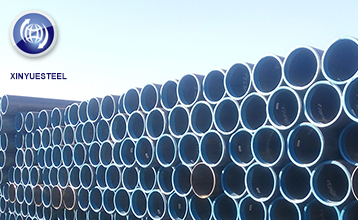Later demand will continue to decline
Oct. 20, 2021
In the fourth quarter, steel companies will continue to increase their efforts to limit and reduce production, and the process will continue to accelerate. It is expected that the demand for iron ore will continue to decline, and the price will likely fall but will not rise. "Volume and price reduction" will become the iron ore market in the fourth quarter The main theme.
A few days ago, the Ministry of Ecology and Environment issued the "Tackling Plan for Comprehensive Treatment of Air Pollution in Key Areas from 2021 to 2022 in the Autumn and Winter (Draft for Solicitation of Comments)", clearly and strictly implementing the relevant requirements for the reduction of crude steel production in 2021. The scope of implementation is based on the "2+26" cities in the Beijing-Tianjin-Hebei region and surrounding areas and cities in the Fenwei Plain, adding some cities in northern Hebei, northern Shanxi, eastern and southern Shandong, and southern Henan. Recently, steel companies in Zhejiang, Jiangsu and other places have received notices of production cuts and plan to gradually implement production cuts. The production reduction plan for short-process steel mills is concentrated on September 13-30. The production cuts of steel mills in Jiangsu area were mainly concentrated from September 10th to October 15th, and the crude steel output of each mill was affected to varying degrees.

Industry insiders believe that entering the fourth quarter, the domestic steel industry will face the combined effects of policies such as "policy suppression of production", "restriction of production during the heating season" and "restriction of production during the Winter Olympics". Steel production will decline and the intensity of iron ore demand will weaken. It is an inevitable trend. According to industry insiders' analysis and forecast, if the crude steel output in the second half of the year is "balanced", it will reduce the output of 64.315 million tons of crude steel and reduce the demand for 101.02 million tons of iron ore. Compared with the second half of last year, this number decreased by 11.61%. It is estimated that the amount of iron ore that needs to be imported from September to December this year is 342.67 million tons. Adding the import volume from January to August, the annual iron ore import volume is 1,091.12 million tons, a year-on-year decrease of 6.9%. Ore imports are expected to drop to 1.1 billion tons again. This will be an important factor in the price reduction and volume reduction of imported iron ore.
In the long run, the “dual control of energy consumption” policy will become an important starting point for the steel industry to reduce output. Output will be directly linked to energy consumption. The original emission restriction will be converted to energy consumption restriction, which will have a long-term impact on the domestic steel industry. Impact. Suppressing crude steel output and reducing iron ore demand will become the norm.
In addition, with the implementation of the instruction "The energy industry must continue to develop, otherwise it will not be enough to support national modernization", efforts will be made to explore domestic iron ore resources, and the amount of domestic iron ore will increase, which will also reduce the impact on foreign countries Excessive dependence on resources.



